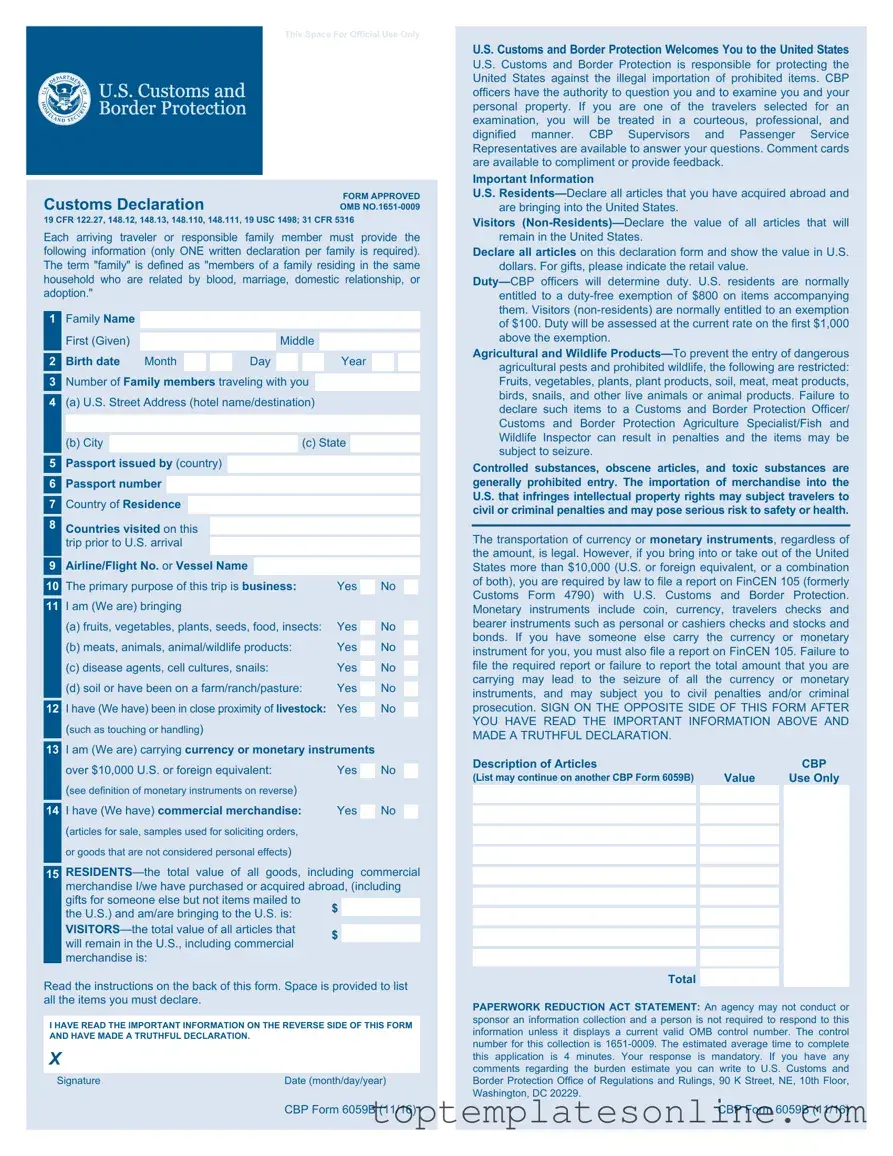Fillable CBP 6059B Form
The CBP 6059B form is a declaration form required by U.S. Customs and Border Protection (CBP) for travelers entering the United States. This form collects essential information about the items you are bringing into the country, ensuring compliance with U.S. laws. Completing the CBP 6059B accurately helps facilitate a smoother entry process at U.S. borders.
Customize CBP 6059B Here
